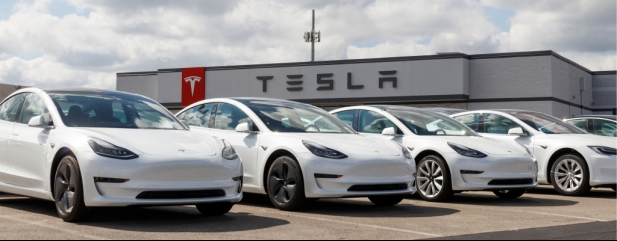Archived article
Please note that tax, investment, pension and ISA rules can change and the information and any views contained in this article may now be inaccurate.
Tesla deliveries miss in third quarter and pose the risk of lower margins

Tesla (TSLA:NASDAQ) unveiled another round of vehicle price cuts in the US (2 October), the seventh time this year that the world’s biggest electric car maker has lowered prices on some models.
Yet investors were left a little miffed by lower third-quarter deliveries, even after planned production ‘downtime’, and this helped sour sentiment a touch ahead of third quarter earnings on 18 October.
The company reported a 6.7% fall in third quarter (to 30 September) deliveries versus the second three months to June after its gigafactories in Austin and Shanghai shutdown temporarily for upgrade work.
Tesla delivered 435,059 electric vehicles in the third quarter; missing consensus analyst estimates of 461,640 vehicles. Wedbush analyst Dan Ives expects most of the deliveries drift to come through in a strong fourth quarter, but not all analysts agree.
The latest deliveries miss may also imply that potential buyers are starting to hold off on purchases in the hope that lower prices have yet to bottom out.
There are two main reasons for Tesla’s aggressive pricing strategy; to boost sales in a slowing electric vehicle market and, crucially for Tesla, to fend off competition from legacy car makers and Chinese challengers. Global car makers are in a race to electrify their vehicles as they press forward with strategies to drive the next phase of mobility and offer consumers smaller carbon footprint mobility options.
But if price cuts are no longer stimulating demand, analysts say, it poses an increased risk to profit margins. Tesla’s second quarter 2023 gross margins, where analysts once had a 20% line in the sand drawn, were 18.2% versus 19.3% in the quarter to March, and 22.4% in the second three months of 2022.
Over the same period, operating margins have almost halved to 9.6%.
The latest lower prices could cost the company $1.2 billion a year, according to some analyst calculations, leading to criticism of Tesla’s reluctance to invest in a marketing campaign underlining the increasing cost parity of a Tesla versus alternative new vehicles.
At $38,990, the base Model 3 sedan now costs $8,700 less than the average amount paid for a car or truck in the US, according to an analysis by Bloomberg Green, including mainstream ICEs (internal combustion engine) models. The starting price for a Model Y SUV is $3,700 below the average auto price of roughly $48,000. This follows months of price cuts as Tesla turns the screw on legacy automakers that were already struggling to make electric vehicles profitably.
Yet many potential new car buyers simply do not realise how competitive Tesla’s prices are, according to Future Fund managing partner Gary Black, something it needs to address.
Important information:
These articles are provided by Shares magazine which is published by AJ Bell Media, a part of AJ Bell. Shares is not written by AJ Bell.
Shares is provided for your general information and use and is not a personal recommendation to invest. It is not intended to be relied upon by you in making or not making any investment decisions. The investments referred to in these articles will not be suitable for all investors. If in doubt please seek appropriate independent financial advice.
Investors acting on the information in these articles do so at their own risk and AJ Bell Media and its staff do not accept liability for losses suffered by investors as a result of their investment decisions.
Issue contents
Feature
Great Ideas
News
- Tesla deliveries miss in third quarter and pose the risk of lower margins
- Weak retail figures and Bank of England gloom dial down rates pressure
- Markets buffeted by strong US job gains and Israel attacks
- Hunting lifted by higher oil prices and inspiring long-term vision for business
- VinFast stock’s rapid rise matched by equally fast falls
 magazine
magazine








